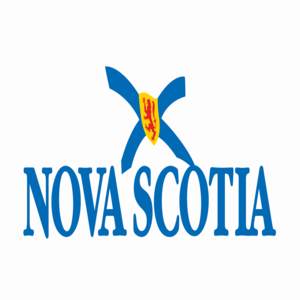Economy
Type of resources
Available actions
Topics
Keywords
Contact for the resource
Provided by
Formats
Representation types
Update frequencies
status
Scale
-

The Ontario Watershed Information Tool (OWIT) is used to calculate information about Ontario’s watersheds. Watersheds are areas of land where surface water converges to a single point. Water professionals in the public and private sectors and academia use OWIT to better understand water flow in Ontario. The general public use OWIT for educational or general interest purposes. You can use the tool to: * create a map of a watershed * characterize the watershed * extract land cover information
-

Mining Leases
-
Data provided shows grants and contributions provided to Canadian firms by National Research Council (NRC) and its Industrial Research Assistance Program (IRAP) between April 1, 2021 and March 31, 2022.
-

The data is used to create reference and thematic maps The Special Needs Strategy was launched in February 2014 to improve services for children and youth with special needs and their families. Its three key areas include: * identifying kids' needs earlier and connecting them to the right help sooner * coordinating service planning * making the delivery of rehabilitation services seamless
-

Data collected between 2005 to 2007, 3% of sample collected in 2005, 51% in 2006 and 46% in 2007. This dataset contains a compilation of data collected from different sources. **VOG 06/** **VOG** **08 (Value of Goods)** : The data is derived from the information collected in the 2006 Ontario Commercial Vehicle Survey. This survey is a roadside intercept survey of truck drivers, which collects information about the trip, commodity and the vehicle. The survey primarily captures intercity trucking activity and under-represents truck flows in urban areas. The value of goods provided in this table is derived from the Commercial Vehicle Survey, but factored up to represent the overall trucking activity on the network segment for 2006 and 2008. **AADTT 2006 and ****AADTT** **2008:** The data is derived from the Ministry of Transportation's (MTO) inventory of annual traffic data for the Provincial Highways. The commercial volumes are first calculated using the AADT and the Commercial Percentage values for each traffic segment. These values are then adjusted to remove variations between segments caused by fluctuations in AADT. The volume given for each direction is one-half of the total value. MTO does not maintain volume by direction. For freeway segments with core/collector configuration, the total volume is divided into four equal portions and assigned to each stream. **Hourly Truck Volumes ( WD00-23 and WN00-23): ** These fields contain estimates of average hourly volumes for a typical weekday and weekend day. The estimates are based on observed hourly distribution at more than 100 directional Commercial Vehicle Survey sites across the province, **AADTT** and other information. **RD _NAME:** Name of the road **VOG** **06:** 2006 average daily value of goods assigned to road network link by directions. **VOG** **08:** 2008 average daily value of goods assigned to road network link by directions. **AADTT** **2006:** 2006 Annual Average Daily Truck Traffic; it is the truck volume assigned to road network link by directions. **AADTT** **2008:** 2008 Annual Average Daily Truck Traffic; it is the truck volume assigned to road network link by directions. **WD** **00-23:** 2008 Weekday ( **WD** ) hourly truck volume; 00 - 23 represents starting hour of the day (e.g. 12 represents 12 P.M. - 1 P.M.). **WN** **00-23:** 2008 Weekend ( **WN** ) hourly truck volume; 00 - 23 represents starting hour of the day (e.g. 12 represents 12 P.M. - 1 P.M.). *[ WD]: Week day *[VOG]: Value of Goods *[AADTT]: Annual Average Daily Truck Traffic *[WN]: Week end *[RD]: Road *[WD]: Week day *[MTO]: Ministry of Transportation *[AADT]: Annual Average Daily Traffic
-

List of name of business, operating name, licensed as ferment on premises operators in NS pursuant to the Liquor Control Act
-

This dataset provides details on the location of MTO aggregate pits. Aggregate pits provide the material necessary to build roadways in the province. Official LIO title: Aggregate Sites MTO *[MTO]: Ministry of Transportation
-

Ontario provides a range of services and supports to children and youth with Autism Spectrum Disorders. In each defined service area, a lead Transfer Payment Agency is responsible for coordinating autism services funded by the Ministry of Children and Youth Services. They also ensure that the core services and key processes are implemented in all service providers. Instructions for downloading this dataset: * select the link below and scroll down the metadata record page until you find **Transfer Options **in the **Distribution Information** section * select the link beside the **Data for download** label * you must provide your name, organization and email address in order to access the dataset This product requires the use of GIS software. *[GIS]: geographic information system
-

Get mapping data related to the Northwest Greater Toronto Area Transmission Corridor Identification Study. In June 2019, the Ministry of Energy, Northern Development and Mines along with Ontario’s electricity system planner, the Independent Electricity System Operator, launched the Northwest GTA Transmission Corridor Identification Study to identify an appropriate corridor of land for use by future power lines if and when the need arises.
-

Data is collected each year, according to the lake-by-lake cycle. Information includes: * sediment chemistry * approximately 80 index and reference stations throughout the Great Lakes basin
 Arctic SDI catalogue
Arctic SDI catalogue